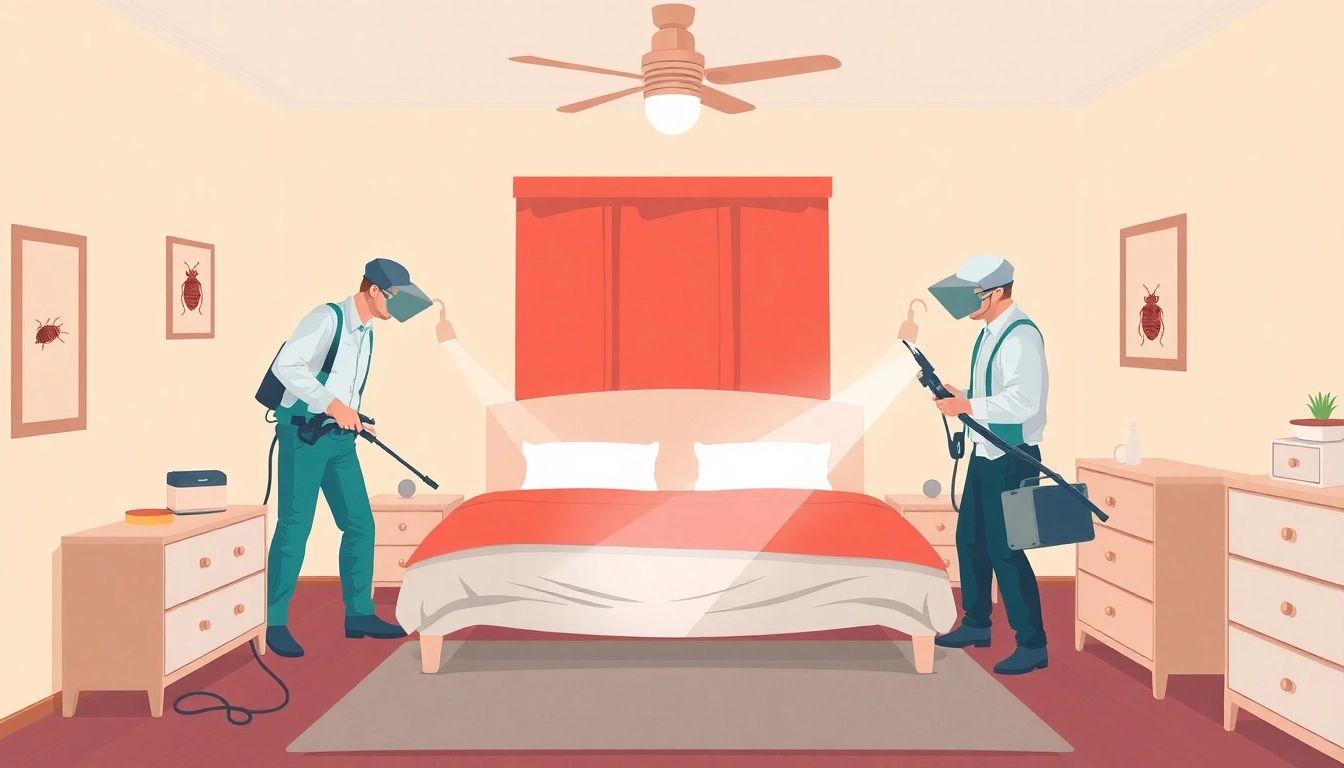Understanding Bed Bugs: A Comprehensive Overview
What Are Bed Bugs?
Bed bugs, scientifically known as Cimex lectularius, are small, elusive pests that primarily feed on the blood of humans and animals. These wingless insects are typically reddish-brown, flat, and oval-shaped, measuring about 4 to 5 millimeters in length. Known for their ability to hide in tiny crevices, bed bugs thrive in warm, dark environments, making beds and furniture their most favorite hiding spots. Their nocturnal nature enables them to feed on unsuspecting hosts while they sleep, leading to unsuspected infestations occurring right under people’s noses.
Signs of Infestation to Look For
Recognizing a bed bug infestation early can save homeowners a great deal of trouble. Key indicators include:
- Bed Bug Bites: Small, red, itchy welts appear on the skin, often in a line or cluster.
- Dark Spots: Tiny dark spots (excrement) on bedding or furniture.
- Eggs and Shed Skins: Finding eggs (white and about 1mm in size) and shed skins in mattress seams or furniture cracks.
- Unpleasant Odor: A musty smell due to pheromones emitted by bed bugs.
Health Risks Associated with Bed Bugs
While bed bugs are not known to transmit diseases, their bites can cause various health issues. Common reactions include:
- Allergic Reactions: Some individuals experience severe allergic reactions to bed bug bites.
- Secondary Infections: Scratching bitten areas may lead to skin infections.
- Insomnia and Anxiety: The stress and anxiety of dealing with a bed bug infestation can lead to sleep disorders.
Initial Steps for Bed Bug Removal
Identifying Infested Areas
Before any treatment can begin, it’s crucial to identify areas of infestation. Begin with a thorough inspection of:
- Bedrooms: Mattresses, box springs, bed frames, and upholstered furniture.
- Laundry: Clothes, bedding, and towels often harbor eggs or larvae.
- Living Areas: Couches, chairs, and even behind baseboards or electrical outlets.
Preparing Your Home for Treatment
Proper preparation is vital for effective bed bug removal. Follow these steps:
- Remove any clutter from affected areas to uncover hiding spots.
- Wash all linens and clothing in hot water and dry on high heat to kill any eggs or bugs.
- Vacuum thoroughly, focusing on crevices and corners.
- Seal any cracks or crevices in walls or cabinetry where bed bugs might hide.
Choosing the Right Removal Method
Depending on the severity of the infestation, homeowners may choose DIY methods or hire professionals. While DIY can be effective for smaller infestations, extensive outbreaks often require professional intervention.
DIY Techniques for Bed Bug Removal
Heat Treatment: Effectiveness and Steps
Heat treatment is one of the most effective DIY methods that can eliminate all life stages of bed bugs. It involves:
- Heating infected items (like mattresses and clothes) to at least 115°F (46°C) for at least 90 minutes.
- Utilizing portable heat chambers to treat furniture and other large items.
- Ensuring that all items reach the target temperature, which can be monitored using a thermometer.
Chemical Solutions: Safety and Application
When using chemical sprays and pesticides, it’s critical to select products that are safe for indoor use. Follow these guidelines:
- Read and follow all label instructions carefully.
- Apply insecticides around the periphery of suspected infested areas.
- Allow treated areas to dry completely before re-entering.
- Consider hiring a licensed pest control professional for tough infestations experienced with chemical applications.
Non-Chemical Approaches: Natural Exterminators
Several non-chemical methods can be effective in controlling bed bugs:
- Diatomaceous Earth: A natural powder that can kill bed bugs through dehydration.
- Essential Oils: Certain oils like tea tree and lavender are believed to repel or kill bugs.
- Vacuuming: Regular vacuuming can significantly reduce bed bug populations.
Professional Bed Bug Removal Services
When to Call the Experts
Consider professional help if:
- The infestation persists after DIY efforts.
- You encounter a large-scale infestation, making it difficult to manage alone.
- You lack the time or resources to perform thorough treatments.
What to Expect from a Professional Treatment
Professional exterminators will typically follow a systematic approach, which includes:
- Thorough inspection to assess the extent of the infestation.
- Developing a tailored treatment plan based on the inspection findings.
- Applying appropriate techniques such as heat treatment, chemical sprays, or both.
- Providing follow-up inspections to ensure effectiveness and offer prevention tips.
Evaluating Costs and Services Offered
The cost of professional bed bug removal varies based on several factors:
- Severity of infestation and size of the home.
- Methods used for extermination (e.g., heat treatment is usually more expensive than chemical).
- Geographical location can also impact pricing.
Preventing Future Infestations
Best Practices for Keeping Your Home Bed Bug-Free
Once the bed bugs are removed, the following practices can help prevent re-infestation:
- Regularly inspect second-hand furniture or clothing before bringing items into your home.
- Be cautious while traveling—check hotel rooms for signs of bed bugs.
- Seal any cracks and crevices where bed bugs could hide.
What to Avoid in Your Bed Bug Prevention Plan
When implementing prevention strategies, avoid these common missteps:
- Assuming that bed bugs are only found in dirty environments—clean spaces can also harbor these pests.
- Neglecting to communicate with neighbors about potential infestations; bed bugs can easily travel between units in apartment complexes.
Ongoing Monitoring and Maintenance Tips
Establishing proactive measures will assist in keeping an eye on potential bed bug activity:
- Regularly vacuum and inspect your home, particularly focusing on bedrooms and common areas.
- Use bed bug mattress encasements to protect against future infestations.
- Consider scheduling regular pest control inspections, especially if living in a bed bug-prone area.



